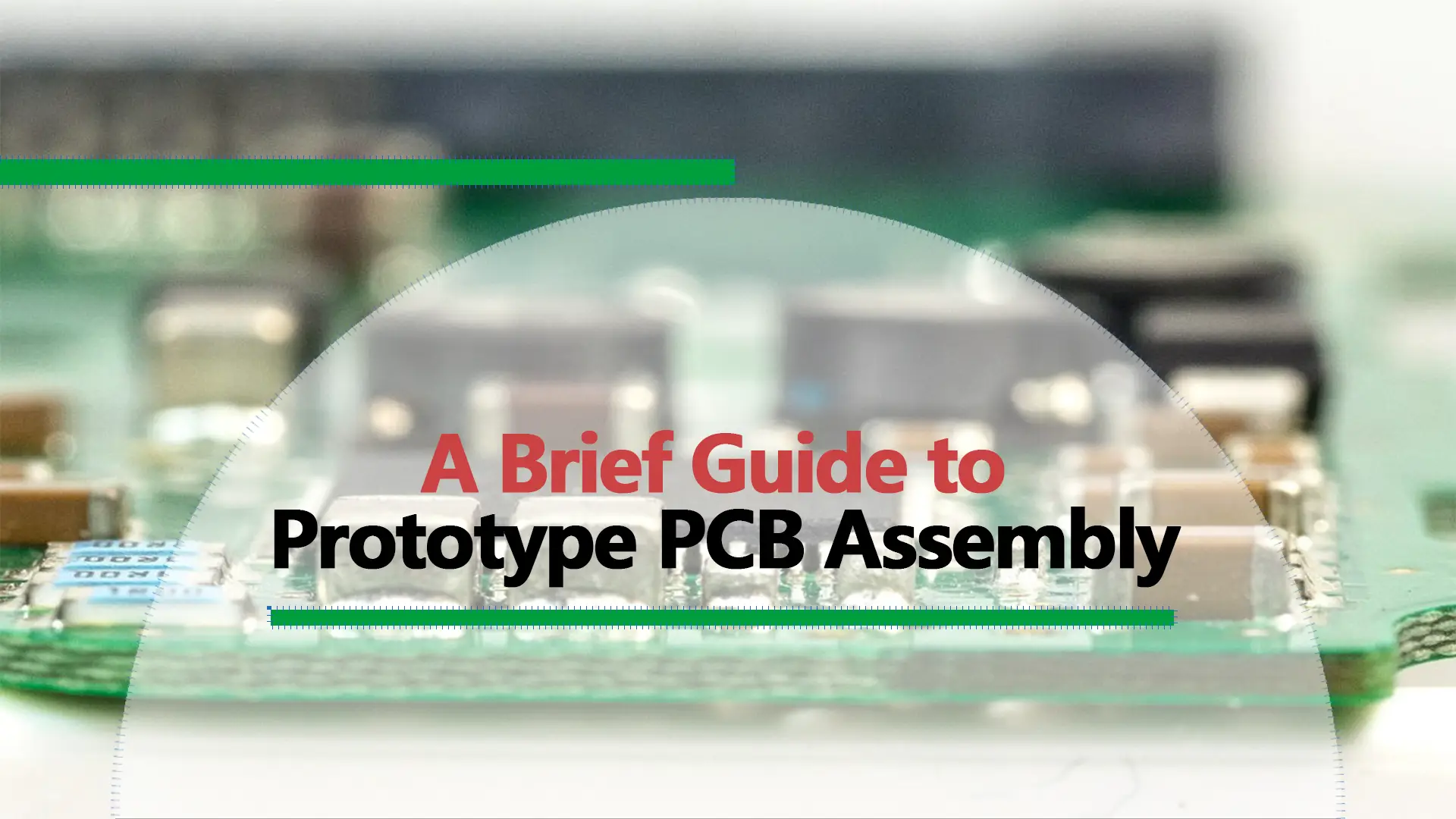A Brief Guide to Prototype PCB Assembly


What Is Prototype PCB Assembly?
Prototype PCB assembly refers to the experimental phase that follows the PCB design to demonstrate the feasibility of the design and detect any potential problems. In addition, at this stage, the manufacturer can analyze the strengths and weaknesses of the board, which provides a reference for making more versions in the future. Manufacturers regard prototype PCB assembly as a very important step in the PCBA manufacturing process, as it allows them to get a snapshot of the entire process and eliminate errors before a full production run to ensure that everything works as expected when it comes to mass production.
The Benefits of Prototype PCB Assembly
Compared to going straight to mass production, prototype PCB assembly has several benefits, in this part, we will discuss them one by one:
- Detect Errors in Early Stage: PCBA prototypes allow manufacturers to find errors on the board in the early stage, so they can make improvements and fix problems before investing much time and money into the unworkable solution. Moreover, the earlier they figure out the problem, the less time and cost it requires to make it all right.
- Test Components Individually: Prototyping enables manufacturers to perform multiple runs of testing to check the function of different components individually. This is especially helpful when it comes to complex circuit boards that involve kinds of components, testing them separately can pinpoint where problems may occur. Without this, it’s hard to figure out where the problem is.
- Complete Project Efficiently: Using PCBA prototypes is beneficial for early detection of design defects and rapid identification of components that need to be adjusted. If problems are discovered during mass production, it will take a lot of time and lead to longer project completion times. In addition, ensuring design feasibility during the prototyping phase reduces batch rework issues and facilitates the efficient completion of the entire project.
- Reduce Overall Costs: Prototype PCB assembly helps reduce overall project costs significantly, as all potential issues can be found and fixed at this stage. It is known that the cost of rework of PCBA prototypes is much lower than the cost of mass production rework, on the other hand, it is easier and less time-consuming to solve problems at the prototype stage before starting mass production.
- Improve Final Product: High-quality PCBA prototypes can give you a very accurate estimate of the results of mass production, as they are a good representation of the performance of the final product. In addition, suppliers can improve the performance of the PCB and components based on the problems found in the PCBA prototype, thereby improving the quality of the final product.
Prototype PCB Assembly Process
Prototype PCB assembly is a process that involves six steps, and each step needs to be performed with attention to make sure it works as expected. These steps include:
- Selection of Material: At the very first, manufacturers need to select the material for PCBA prototypes. Normally, they would go for plastic which is the first choice when it comes to PCBA prototype manufacturing. As this material is easy to work with, it is easily foldable and molded.
- Rapid Design: This step is completed on a stencil, and the position of components and connective traces will be confirmed in the rapid design phase.
- Testing the design: In this step, manufacturers aim to test the functionality of the design, they would check if the location and connections of the components are designed properly.
- Rectification and redesign: If there is any error found in the design, then PCB manufacturers would perform rectification and redesign. They may need to redesign the prototype with new connection traces on the stencil to ensure the performance of the prototypes.
- Rapid Prototyping: This step involves prototype manufacturing. The whole process can be completed quickly by using the stencil, all components are mounted on the exact position of the board, just as designed on the CAD software.
- Functionality Testing: The last step aims to test the functionality of the finished PCBA prototypes. If all functions can achieve expected results, then manufacturers would move to the next step-mass production.
Working with MOKO for Prototype PCB Assembly
It’s no small feat to make high-quality PCBA prototypes, which is a process that requires expertise. Therefore, it is better to work with an expert such as MOKO Technology.
MOKO provides a fast prototype PCB assembly service while ensuring the high quality of the prototypes at the same time. We utilize cutting-edge technologies and equipment to perform prototype assembly, our in-housing manufacturing can guarantee the quality and save costs. In addition, we offer a variety of prototype PCB assembly services, ranging from standard PCBs to complex PCBs such as HDI, High frequency, and Rigid-flex PCBs. You can contact us directly to get more detailed information, we are 24/7 online!
Recent Posts
Impedance Matching: A Critical Factor in High-Speed PCB Design
Impedance matching has become a cornerstone of the signal integrity in the realm of high speed PCB…
How to Clean a Circuit Board Safely and Effectively?
It is important to learn how to clean a circuit board properly if you’re working…
Counterbore vs Countersink: Which to Choose for Your PCB?
When designing PCBs, selecting the appropriate type of holes for fasteners is crucial. And much…
PCB Copper Foil: Types, Properties & How to Choose
PCB copper foil is one of the most critical materials in the printed circuit board…
MOKO Technology Launches Vietnam Manufacturing Base in February 2025
Shenzhen, China - February 11, 2025 - MOKO Technology, a leading global electronics manufacturing service…
PCB Solder Mask: What It Is and Why Every Circuit Board Needs It?
While most people focus on the components and copper traces that make up PCBs, there's…


